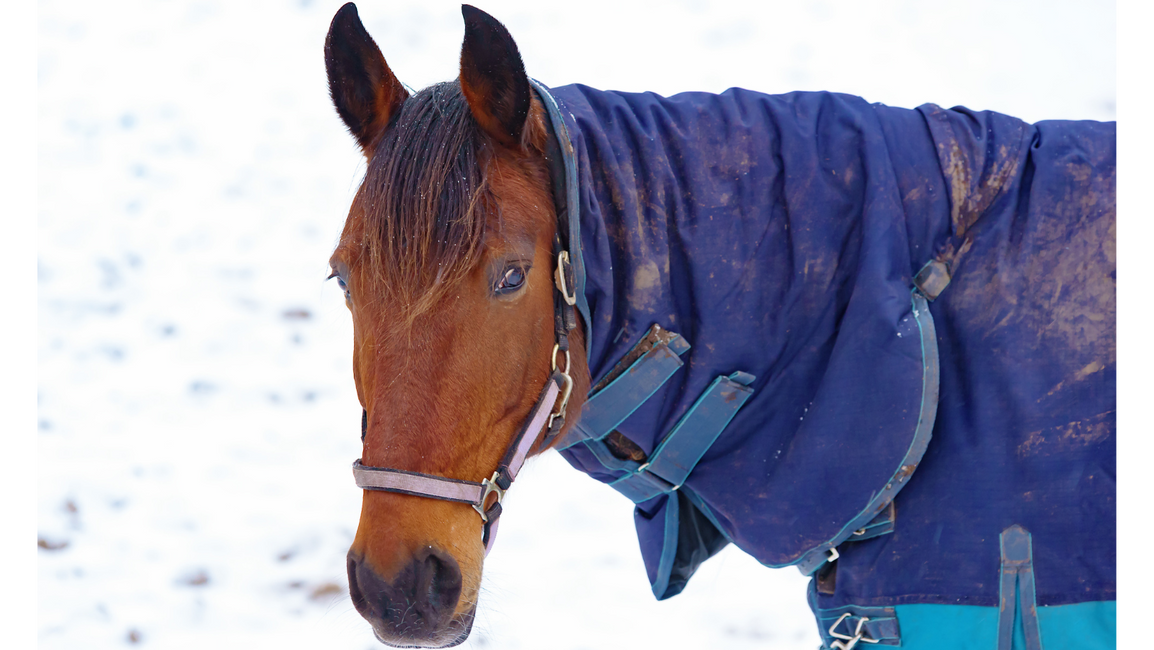
To Clip or Not to Clip, That is the Question
It’s that time of year again when the temperatures fall, leaves change colors and Pumpkin Spice becomes the flavor of the nation. As you start to pull out your thick blankets and heavy jackets to deal with those cooler temperatures, your horse is also adapting to its changing environment. During the cooler months of the year, horses develop a thick coat to keep them warm and to shield them from weather like rain and snow.
These thick coats combined with an extra layer of fat and small muscles designed to raise the hair off of the skin, create a warm layer of isolation from the outside world. However, thick winter coats, while beneficial to the animal, can also cause problems for your horse depending on the climate he or she lives in or the exercise regimen that you follow. The long hair can trap sweat at the skin level and become a perfect breeding ground for bacteria that can lead to skin disease according to the The Chronicle of the Horse. Leading you to answer the question, to clip or not to clip?
This is a difficult question to answer because there are many factors affecting your decision. First you must evaluate the climate your horse lives in. A horse living in frigid temperatures having to endure snow and wind will require its coat to keep itself warm but a horse living in a climate where temperatures tend to fluctuate during the day will most likely benefit from clipping. Clipping allows you a better way to regulate your horse’s skin temperature and for sweat to dry much more quickly. After the horse has been clipped, you will have to substitute that nice thick coat for ample blankets to ensure your horse stays warm. A good rule to follow is to have one medium and one heavy blanket. This allows you to manage the amount of warmth needed while also allowing you to layer up on those especially cold days or nights.
The next thing you will want to evaluate when choosing whether or not to clip your horse is his or her exercise regimen. A horse that works heavily during the winter will require a clipping just to make it easier for you to groom. A horse retaining his coat but participating in exercise cannot simply be turned loose after riding because their damp, sweaty coat will cause a chill. Therefore a lengthy and repetitive process of grooming, coolers and hand walking is required until the horse is completely dry. According to Pro Equine Grooms, “there is a recent study from Sweden (a very wintery place) that suggests that unclipped horses who exercise are more likely to overheat and have a higher maximum respiratory rate.”

Having said all that, the decision to clip is ultimately up to the owner. You can decide when to clip, how to clip and what to clip based on the specific needs of your horse. Horses mainly sweat on their neck and flanks so many owners choose to leave the legs and face a little longer. Some owners also choose to leave a patch of thicker coat under the saddle to protect the skin from irritation during riding (Pro Equine Grooms). If you decide to clip your horse, you must be able to keep him or her properly blanketed throughout the day, possibly changing blankets 2 to 3 times per day. If this is not something you will be able to do, you will want to look into a boarding facility that will change the blankets for you. If both of these things do not seem possible for you, clipping may not be the best option for your horse.
The main reason to clip is to keep your horse as comfortable as possible. There are many factors that influence the decision of whether to clip or not including the climate your horse lives in and his or her exercise regimen. Clipping is completely an owner’s decision and there are many ways it can be done. The ultimate goal is to strike a balance of warmth and sweat evaporation to make sure your horse stays warm while avoiding a buildup of bacteria on the skin. Always keep an eye on changing weather conditions and how your horse is reacting to those changes and always provide ample blankets if you have clipped your horse.
More Clipping Resources:
http://www.chronofhorse.com/article/clip-or-not-cl...
https://www.vetstream.com/delawarevets/html/pdf/Fa...
http://www.horsechannel.com/horse-exclusives/clip-...
http://practicalhorsemanmag.com/article/stressfree...

